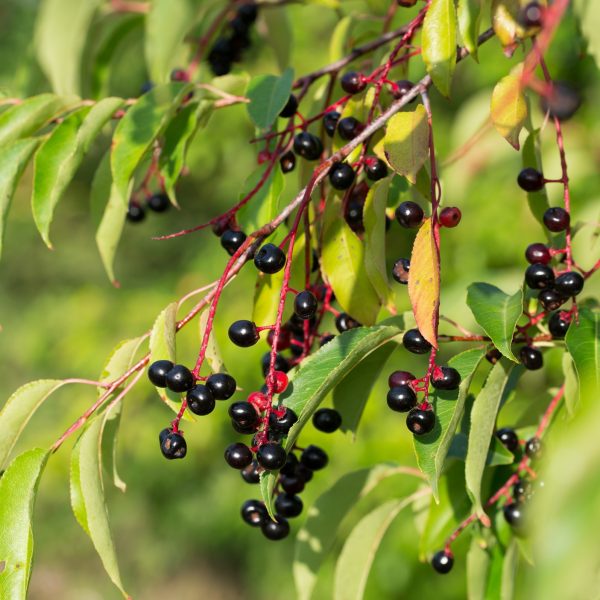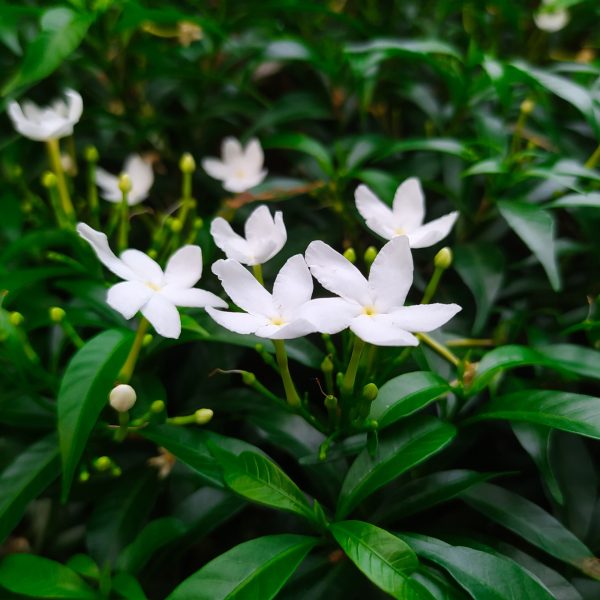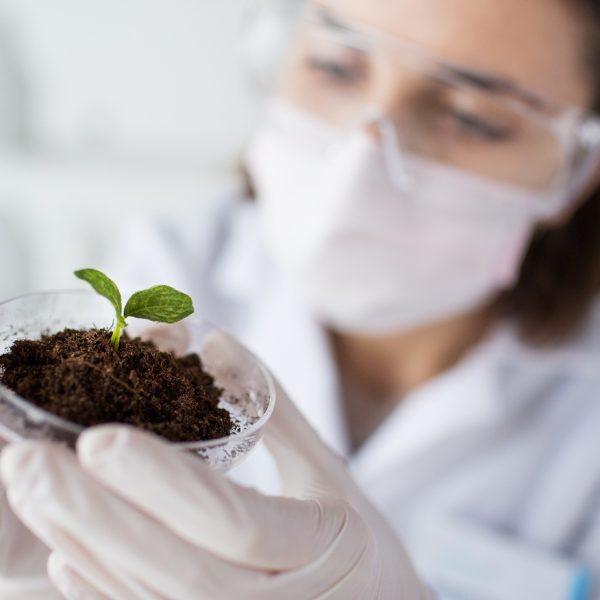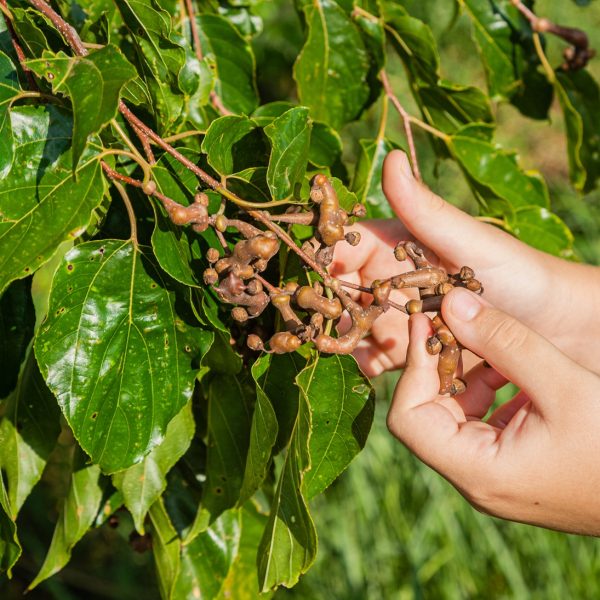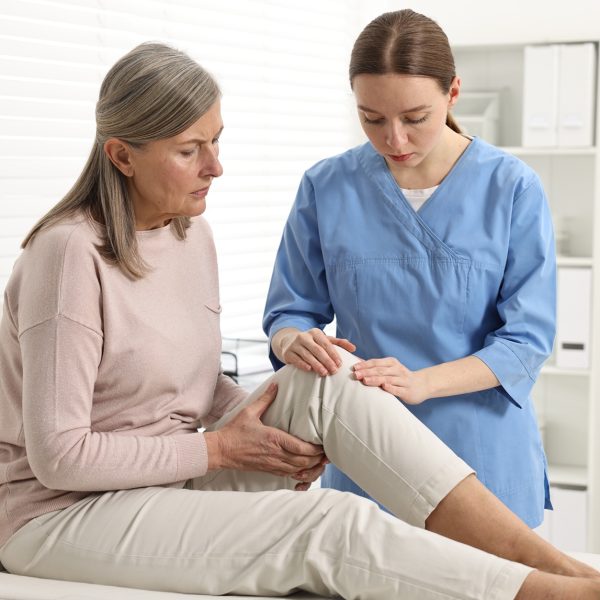-
How does it feel?
Olive leaf tea has a delicate leafy flavour similar to green tea. This is followed by a bitter taste in the mouth, which is largely due to the presence of one of olive leafs important compounds — oleuropein (1). Its astringent qualities pucker the mucous membranes in the mouth and digestive tract.
-
What can I use it for?

Olive leaf (Olea europaea) Olive leaf and olive oil both offer a wide range of therapeutic benefits to metabolic and cardiovascular health. The use of olive leaf in herbal medicine is rising in popularity. It is predominantly used for conditions in the cardiovascular system as well for urinary, immune and digestive conditions (2, 3).
Olive is native to the Mediterranean where its produce (olive oil and olive leaf) are consumed in high quantities. The epidemiological connection between the Mediterranean diet and lower incidence of cardiovascular disease is well established and often linked to high intake of olive oil (4).
This monograph predominantly focuses on the medicinal qualities of olive leaf, which contains an abundance of unique medicinal compounds. It has high levels of phenolic compounds that have been identified as having powerful antioxidant actions as well as anti-atherosclerotic, anti-inflammatory and especially blood pressure lowering effects (5). It has also been shown to decrease arterial stiffness (6). These combined actions allow olive leaf to effectively protect and support cardiovascular health on multiple levels. It is of particular benefit to the aging and to those with a predisposition to cardiovascular diseases (5).
In modern herbalism, olive leaf is primarily used in the treatment of hypertension (high blood pressure). Hypertension is a common condition that increases the risk of serious cardiovascular diseases (CVD), which is one of the leading causes of death globally. Olive leaf may be useful prophylactically as a home remedy to help maintain healthy blood pressure. It also offers great benefit to the physiological health of the cardiovascular system (5). However, for those seeking support in the management of moderate to severe hypertension, it is advised to work alongside a qualified medical herbalist to ensure the condition is effectively addressed.
Olive leaf has been used traditionally to help manage fevers due to its febrifugal action (3). It also has some remarkable antiviral activities against common respiratory viruses, influenza, and herpes viruses (2), which may add to its effects in reducing the symptoms of viral illnesses (7).
Olive leaf benefits the health of the urinary system and may be of use to those who are prone to urinary tract infections (8). It is often taken as a tea to increase exposure of its bioactive compounds to the urinary mucous membranes via its diuretic effects (3).
-
Into the heart of olive leaf

Olive tree (Olea europaea) The energetic profile of olive leaf is cooling, bitter and astringent (2), it also has an energising effect due to its ability to support so many vital functions in the cardiovascular and immune systems (8).
It is best suited to address relaxed (flaccid or atonic) and depressed tissue states. The relaxed tissue state classically lacks tone and emits excess secretions. The tissues no longer hold their form or fluids. This can be observed in lacklustre skin that has lost its elasticity, organ prolapse, water-logged mucus membranes — i.e. spongy gums, varicose veins and a limp tongue. Such tissue conditions are commonly indicated for olive leaf’s astringent and tonic qualities. By contrast, olive leaf also invigorates depressed or underfunctioning tissues through its toning astringent action. This mostly refers to the mucous membranes in a number of visceral organs (2).
Olive leaf is also used in the form of a flower essence. It is one of the original 38 Bach flower remedies identified by Dr Edward Bach used for energetic healing of specific emotional patterns. Olive leaf flower remedy is indicated where there is a fundamental lack of energy and vitality (9).
The positive potential of olive flower remedy is to restore, strengthen and energise those who present with a lack of interest in life. Dr Bach describes olive as a remedy for those who are “spent in body and mind” who experience exhaustion to the point of tears, who tire easily and no longer find joy in life. Olive’s positive potential allows one to exist with awareness of the needs of their body (9).
-
Traditional uses

Green olives with leaves (Olea europaea) The olive tree is one of the oldest cultivated trees with evidence of cultivation dating back more than 7000 years. It has been used both as food, medicine and for its beautifying purposes (olive oil) since ancient times. It is the first botanical that is referenced in the Bible; described in Ezekiel 47:12, “The fruit thereof shall be for meat, and the leaf thereof for medicine (10)”. The olive tree is regarded as a symbol of heavenly power, abundance, glory, and peace (1).
There is evidence for its use in ancient Egypt where it was believed to have been used in the process of embalming royalty. Olive branches were also found in the tombs of pharaohs (10).
In ancient Greece, olive branches were used as offerings to deities and as emblems of purification. Olive oil was burnt at the first olympic games to ignite what was so named the eternal flame’. Its leaves were used to crown olympic champions. There is reference for use in the management of fevers in ancient Greece. In the Hippocratic Corpus there are more than sixty medicinal uses for olive oil, many such are referenced for use in skin disorders and fatigue (10, 11).
Throughout history there are multiple references for use of olive leaf in the treatment of fevers; including intermittent fever, typhoid fever and bilious fever. The leaf was also traditionally used for the treatment of malaria (3).
It has long been known for its diuretic actions which were used for fluid retention and nephritis. It was also indicated in the treatment of digestive conditions such as dyspepsia and gastritis and also for exhaustion and convalescence (3).
In more recent history olive leaf is referenced in the King’s American Dispensatory 1898 for use as a strong decoction for regulating the body temperature, also in reference to the treatment of fevers (10).
-
Traditional actions
Herbal actions describe therapeutic changes that occur in the body in response to taking a herb. These actions are used to express how a herb physiologically influences cells, tissues, organs or systems. Clinical observations are traditionally what have defined these actions: an increase in urine output, diuretic; improved wound healing, vulnerary; or a reduction in fever, antipyretic. These descriptors too have become a means to group herbs by their effects on the body — herbs with a nervine action have become the nervines, herbs with a bitter action are the bitters. Recognising herbs as members of these groups provides a preliminary familiarity with their mechanisms from which to then develop an understanding of their affinities and nuance and discern their clinical significance.
-
Traditional energetic actions
Herbal energetics are the descriptions Herbalists have given to plants, mushrooms, lichens, foods, and some minerals based on the direct experience of how they taste, feel, and work in the body. All traditional health systems use these principles to explain how the environment we live in and absorb, impacts our health. Find out more about traditional energetic actions in our article “An introduction to herbal energetics“.
Western energetics
-
What practitioners say

Olives on olive tree (Olea europaea) Cardiovascular system
Olive leaf and oil are both indicated as an adjunct in the treatment of hypertension. They both also have anti-hyperlipidaemic and antioxidant actions, which adds to its effect in protecting the cardiovascular system from damage by hyperlipidaemia and oxidative stress (12).
Olive leaf has been heavily researched for its effects in treating hypertension through human studies. It is a safe and effective choice to address this condition, which is employed by herbalists alongside appropriate lifestyle and dietary interventions.
Olive leaf is believed to achieve this hypotensive (blood pressure lowering) effect by a number of actions as it modifies physiological activities in the cardiovascular system. These effects include; inhibiting angiotensin-converting enzyme (ACE — a naturally occurring substance that narrows blood vessels that plays an important role in hypertension). It also acts by blocking calcium channels as well as eliciting vasodilatory and antioxidant activities. The diuretic actions of olive leaf also contribute to its hypotensive effects (5).
Immune system
Olive leaf has a long standing traditional use in the treatment of viral fevers. Research has now been identified that it has direct antiviral activities. It has been found to interfere with viral replication as well as viral attachment to target cells, followed by its subsequent engulfment by immune cells whilst this research is through in vitro methodology, there are further studies through human trials that show effectiveness in improving the outcomes of identified virally infected patients. These findings verify some of the longer standing traditional uses (7).
Olive leaf has been shown to produce a wide range of antiviral effects against respiratory syncytial virus as well as for treating active COVID-19. It helps to moderate body temperature, respiratory rate, pulse rate and improve oxygen saturation as well as reduce levels of CRP (C-reactive protein inflammatory markers) in the blood (7).
Polyphenols found in olive leaf are believed to be active against viruses such as human papillomavirus (HPV), hepatitis C virus, hepatitis B virus, herpes simplex virus, and influenza virus type A (7). A herbalist may employ the antiviral actions of olive leaf as part of a treatment strategy for such viral infections alongside the important dietary and nutritional support.
Urinary system
Olive leaf has potent diuretic actions which may be used to increase renal fluid elimination. This action has a number of therapeutic indications where improved fluid output is required to reduce fluid buildup in the body. It may be indicated in mild cases of water retention and for the treatment of urinary tract infections (UTI) (12).
Olive leaf may be useful to include as part of a healing strategy for recurrent UTIs as it has powerful diuretic and antibacterial actions (8). It also directly supports the mucous membranes in the urinary tract through the astringent and antioxidant effects of its polyphenolic compounds (2, 13).
Note: UTIs must be addressed promptly and with care to effectively tackle the infection due to the risk of bacteria spreading to the kidneys. It is best to seek the support of a qualified medical professional or medical herbalist to ensure effective treatment is achieved.
Digestive system
Olive oil is indicated for the treatment of chronic gastritis. It has a protective action on the stomach lining. Olive oil also has laxative effects, which may be helpful in a number of digestive conditions particularly where there is poor tone in the lower digestive tract (12).
Skin
Olive leaf and olive oil extracts may be useful in the topical treatment of psoriasis, eczema, for skin and mucosal infections due to their anti-inflammatory effects. Olive oil is also useful as a soothing agent for mild sunburns (12).
-
Research

Black olive with leaves (Olea europaea) Olive leaf has been subject to a significant amount of research including human clinical trials as well as in vivo/ in vitro studies. Some of the research focuses on whole plant extracts of olive leaf and others on a number of its compounds particularly oleuropein. A number of these studies have been included below to demonstrate the mechanism of action for some of the medicinal uses discussed in this monograph.
There are many studies exploring the effects of olive leaf for treatment of hypertension as well as for its anti-pathogenic properties. Olive leaf exhibits a wide range of anti-pathogenic effects against viruses, bacteria, yeast, and parasites. It has also demonstrated a number of cardiovascular benefits, including hypolipidaemic, hypoglycaemic and antioxidant activities (10, 12).
The effect of olive leaf extract on systolic and diastolic blood pressure in adults: A systemic review and meta-analysis
A systematic review and meta-analysis was carried out to verify the efficacy of olive leaf extract in in adults with hypertension. The meta-analysis analysed the findings of a number of human randomised controlled trials. The results show that olive leaf extract elicits a significant reduction in systolic blood pressure, with dose dependent effects on diastolic pressure. The anti-hypertensive actions are considered due to its principal phenolic compound known as oleuropein, which reduces blood pressure by a number of particular mechanisms which include inhibition of ACE, blocking L-type calcium ion channels, vasodilation by increasing nitric oxide bioavailability as well as antioxidant properties (5).
A further systematic review carried out in 2021 in which five trials were involving 325 patients aged 18–80 years suggested concurrent results that demonstrated positive effects of olive leaf extract in reducing in systolic blood pressure. This review also verifies lowering efforts on low density lipoprotein (LDL) and pro-inflammatory biomarkers (14).
A randomised placebo controlled crossover study on arterial stiffness
A randomised, controlled crossover clinical trial was carried out to evaluate the effects on arterial stiffness. This study included 18 subjects (nine male, nine female) aged 19–40 years. The subjects were randomised to receive either four phenolic-rich olive leaf extract capsules, (400 mg olive leaf, 14.53 mg oleuropein, plus 672.5 mg safflower oil) or a control (900 mg safflower oil). The study results demonstrated that olive leaf phenolics have anti-inflammatory properties and decrease arterial stiffness. The study identified an action against interleukin 8 (a protein that plays an important role in small blood vessel inflammation) (6).
Antiviral activities of olive leaf extract
Olive leaf has been well researched for its antiviral effects. In vitro studies have also investigated the antiviral activity of olive leaf polyphenols. The findings demonstrated antiviral activity against human papillomavirus, hepatitis C virus, hepatitis B virus, herpes simplex virus and influenza virus type A (7). In vitro studies have identified that olive leaf extract have shown some activity against HIV-1. The findings show potential to inhibit cell-to-cell transmission to target cells as well as viral replication of HIV- 1 (15).
Efficacy of olive leaves extract in hospitalised COVID-19 patients: A randomised, triple-blinded clinical trial
A randomised, triple-blinded controlled trial was carried out to investigate the effects on patients hospitalised with COVID-19 in 2022. 150 patients were randomised to receive olive leaf extract (250 mg); olive leaf extract (500 mg) and the control group received placebo every 12 hours for five days. Vital signs were monitored throughout the study period and over the course of treatment researchers identified significant improvements in body temperature, respiratory rate, pulse rate and a reduction in C-reactive protein (CRP). Oxygen saturation was also significantly higher in the intervention group. In the higher dose group oxygen levels were also found to be significantly higher than that of the control group. The study results demonstrated that olive leaf extract can improve the clinical status of the patients with COVID-19 and decrease the length of hospitalisation (7).
Animal studies are not condoned by herbal reality, however for the purpose of including research from which some understanding of therapeutic actions can be confirmed, some animal studies may have been referenced within the studies included herein.
These works afford us a deeper insight into the medicinal activities of this fascinating plant and show it has significant potential beyond many of its traditional or current uses.
-
Did you know?
The olive is one of the oldest cultivated plants in the world. They have been the economic backbone and commodity of international commerce for the Eastern and Mediterranean cultures for at least 7,000 years (16).
Olive fruits are extremely bitter due to an important compound oleuropein. To remove the bitterness they are cured and fermented. Oleuropein has many medicinal qualities and is present in olive leaves (1).
Additional information
-
Botanical description
Olives are evergreen, medium-sized trees. They grow on strong, often gnarled and twisted dwarfed trunks. The elliptical, dark green and tough textured leaves are covered in tiny hairs and arranged oppositely along the young stems. The leaves have a characteristic silvery-green appearance.
The tiny, white flowers form in elongated clusters on the leaf axils and eventually produce small, oil-rich, plum-like fruits (olives). The olives are harvested when they are green or purple (18).
Wild growing olives generally reproduce by seed. Commercially produced olives usually reproduce clonally. Domesticated olives grown from seed usually produce poor-quality fruit (16).
-
Common names
- Common olive
- European olive
- Tree of eternity
- Sweet oil plant
- Olive oil plant
-
Safety
In the absence of sufficient data, use during pregnancy and lactation is best taken under supervision of a qualified practitioner (12).
-
Interactions
Due to the hypotensive and anti-platelet aggregating properties of olive leaf extract it is not recommended to use alongside blood-pressure lowering medications or blood thinners as it may have a potentiating effects (12).
-
Contraindications
Olive leaf decoction/ infusion is contraindicated in conditions where a reduced fluid intake is recommended (e.g. severe cardiac or renal disease) (12).
-
Preparations
- Fresh/ dried leaf infusion
- Capsules
- Tincture (17)
-
Dosage
Dried (as capsule): Take 275 mg, 3–5 times daily or 210–400 mg, three times daily.
Decoction/ Infusion: To make a decoction place 10g of fresh leaves or 5 g of dried leaf into 150 ml of boiling water, simmer gently for between 15–20 minutes. This should be drunk hot twice a day (12).
Tincture (1:3 in 25%): Take between 2–4ml in a little water up to twice a day (17).
Olive oil: 2–3 tablespoonfuls for most conditions mentioned above. For chronic gastritis only one tablespoon (15 ml) is recommended. This is to be taken in the morning and sipped slowly (12).
-
Plant parts used
Fresh or dried leaf
-
Constituents
- Secoiridoids (oleuropein and its derivatives), hydroxytyrosol,4 poly- phenols (verbascoside, apigenin-7-glucoside, and luteolin-7-glucoside)
- Triterpenes – oleanolic acid and flavonoids (rutin and diosmin)
- Oleuropein (10)
- Vitamins A and E (3)

-
Habitat
The olive was native to Asia Minor and spread from Iran, Syria and Palestine to the rest of the Mediterranean basin 6,000 years ago. They have adapted to be drought-resistant so they can survive in the dry climate. Olive trees grow naturally in seasonally dry Mediterranean shrubland, slopes and rocky areas (18).
-
Sustainability
Olive leaf is a sustainable option in herbal medicine as it is considered a waste product from the olive industry (7).
The IUCN red list of endangered species database currently classifies the olive tree as ‘Data Deficient’. This is because there is currently insufficient information available on the European subpopulation size and distribution of native species of olive in the wild. Whether the genetic identity of the wild subpopulations of olive are affected by hybridisation with cultivated olive is also currently unknown. Further assessments on the sustainability status of olive are required. Wild olive populations are considered to be decreasing in their natural habitat (19).
Habitat loss and over-harvesting from the wild are two of the biggest threats faced by medicinal plant species. There are an increasing number of well-known herbal medicines at risk of extinction. We must therefore ensure that we source our medicines with sustainability in mind.
The herb supplement industry is growing at a rapid rate and until recent years a vast majority of medicinal plant produce in global trade was of unknown origin. There are some very real and urgent issues surrounding sustainability in the herb industry. These include environmental factors that affect the medicinal viability of herbs, the safety of the habitats that they are taken from, as well as the welfare of workers in the trade.
The botanical supply chain efforts for improved visibility (transparency and traceability) into verifiably sustainable production sites around the world is now certificated through the emergence of credible international voluntary sustainability standards (VSS).
Read our article on Herbal quality & safety: What to know before you buy and Sustainable sourcing of herbs to learn more about what to look for and questions to ask suppliers about sustainability.
-
Quality control
Herbal Medicines are often extremely safe to take, however it is important to buy herbal medicines from a reputed supplier. Sometimes herbs bought from unreputable sources are contaminated, adulterated or substituted with incorrect plant matter.
Some important markers for quality to look for would be to look for certified organic labelling, ensuring that the correct scientific/botanical name is used and that suppliers can provide information about the source of ingredients used in the product.
A supplier should be able to tell you where the herbs have come from. There is more space for contamination and adulteration when the supply chain is unknown.
-
How to grow
Olives can be grown for seed (or pit). One may purchase fresh olives, remove all of the soft fruit then clean the pits with warm water. Once clean, soak the pit in luke warm water for 24 hours. It will speed up the germination process to score or rough the surface of the seed during soaking.
Plant the seeds in pots 1–2 inches (2.5–5 cm) deep in the soil. It is best to incubate the seeds while they germinate (under a small cloche or recycled clear plastic bag). They will also need to be placed in a sunny spot, watering before the soil dries every day.
Many, however, grow olive from cutting. Young trees are easy to source. These may be planted in a garden or large terracotta pot in a full sun position. Pit is best to plant out in the ground in spring. Select a well-drained, sheltered site against or near a sunny wall. Stake plants until established.
Keep the soil moist during the growing season. The trees planted outside will not require feeding. However, potted olives may benefit from feeding with a balanced liquid fertiliser once a month (20).
-
Recipe

Olive leaf tincture (Olea europaea) Olive leaf tincture
Tinctures are a great way to extract and preserve the medicinal properties of herbs. They are made using an aqueous-ethanolic solvent, or in the making of home tinctures often just an alcoholic spirit (brandy or vodka are commonly used).
Ingredients
- Olive leaf — dried or fresh
- 25–50% proof alcohol (e.g. vodka)
- Mason jar
- Mesh strainer or cheesecloth (muslin)
- Amber glass bottle
- Labels and permanent marker
Method
- Chop the olive leaf finely.
- Add to mason jar and cover with 250ml of 50% alcohol.
- If using fresh, the fluid content in the olive leaf will dilute the alcohol slightly so it’s important for preservation that the alcohol is above 20% proof.
- Label the jar with the date and ingredients.
- Leave to macerate (infuse) in a cool and dark place away from sunlight for between 2–4 weeks, gently shaking/ turning daily for the first week.
- Strain your tincture using the sterile mesh strainer or muslin cloth and place the liquid into your glass bottle.
- Label your tincture with the date and ingredients.
Example: fresh olive leaf tincture, 10th November 20XX, 1:3 @25% ABV.
-
References
- Olive (Qing Guo) / Olive Leaf. White Rabbit Institute of Healing. Accessed April 30, 2024. https://www.whiterabbitinstituteofhealing.com/herbs/olive/#:~:text=Olive%20Leaf%20
- Wood M. The Earthwise Herbal, Volume 1 : A Complete Guide; 2008.
- Fisher C. Materia Medica of Western Herbs. Aeon Books; 2018.
- Visioli F, Franco M, Toledo E, et al. Olive oil and prevention of chronic diseases: Summary of an International conference. Nutrition, Metabolism and Cardiovascular Diseases. 2018;28(7):649-656. doi:https://doi.org/10.1016/j.numecd.2018.04.004
- Rahimianfar F. The effect of olive leaf extract on systolic and diastolic blood pressure in adults: A systemic review and meta-analysis. Olive Cultivation. Published online July 20, 2022. doi:10.5772/intechopen.102769
- Lockyer S, Yaqoob P, Spencer JPE, Rowland I. Acute consumption of phenolic-rich olive leaf extract reduces arterial stiffness and decreases interleukin-8 production. Proceedings of the Nutrition Society. 2012;71(OCE2). doi:https://doi.org/10.1017/s0029665112000912
- Ahmadpour E, Toulabi T, Yadegarinia D, Yarahmadi S, Mohammadi R, Keyvanfar A. Efficacy of olive leaves extract on the outcomes of hospitalized covid-19 patients: A randomized, triple-blinded clinical trial. EXPLORE. Published online October 2022. doi:https://doi.org/10.1016/j.explore.2022.10.020
- Ruggeri C. Olive leaf extract benefits, uses, dosage and side effects. Dr. Axe. August 24, 2023. Accessed May 30, 2024. https://draxe.com/nutrition/olive-leaf-benefits/.
- Bach E. The Essential Writings of Dr Edward Bach : The Twelve Healers and Other Remedies & Heal Thyself. Ebury Digital; 2011.
- (AltMED) Olive Leaf. https://altmedrev.com/wp-content/uploads/2019/02/v14-1-62.pdf
- Craik EM, Hippocrates. The “Hippocratic” Corpus : Content and Context. Routledge; 2015.
- (EdaEgypt) Egyptian Herbal Monograph Egyptian Drug Authority (EDA) 2023. Accessed April 29, 2024. https://www.edaegypt.gov.eg/media/movh3lt1/olea-europaea-l.pdf
- Bucciantini M, Leri M, Nardiello P, Casamenti F, Stefani M. Olive Polyphenols: Antioxidant and Anti-Inflammatory Properties. Antioxidants. 2021;10(7):1044. doi:https://doi.org/10.3390/antiox10071044
- Ismail MA, Norhayati MN, Mohamad N. Olive leaf extract effect on cardiometabolic profile among adults with prehypertension and hypertension: a systematic review and meta-analysis. PeerJ. 2021;9:e11173. doi:https://doi.org/10.7717/peerj.11173
- Lee-Huang S, Zhang L, Lin Huang P, Chang YT, Huang PL. Anti-HIV activity of olive leaf extract (OLE) and modulation of host cell gene expression by HIV-1 infection and OLE treatment. Biochemical and Biophysical Research Communications. 2003;307(4):1029-1037. doi:https://doi.org/10.1016/s0006-291x(03)01292-0
- 1. The BRAHMS Project U of O. Plant 175 | Olea europaea L. (Oleaceae) | Olive. Oxford University plants 400: Olea Europaea. Accessed May 30, 2024. https://herbaria.plants.ox.ac.uk/bol/plants400/Profiles/OP/Olea.
- Menzies-Trull C. Herbal Medicine Keys to Physiomedicalism Including Pharmacopoeia. Newcastle, Staffs. Faculty Of Physiomedical Herbal Medicine; 2003.
- Olive. Kew. Accessed May 30, 2024. https://www.kew.org/plants/olive#:~:text=Habitat%3A.
- Kell S, Draper D, Magos J. IUCN Red List of Threatened Species: Olea europaea. IUCN Red List of Threatened Species. Published April 16, 2010. https://www.iucnredlist.org/species/63005/102150835
- (Eden) Plant an olive tree in your garden | Eden Project. www.edenproject.com. Accessed April 19, 2024. https://www.edenproject.com/learn/eden-at-home/plant-an-olive-tree-in-your-garden#:~:text=Place%20in%20a%20sunny%20position

